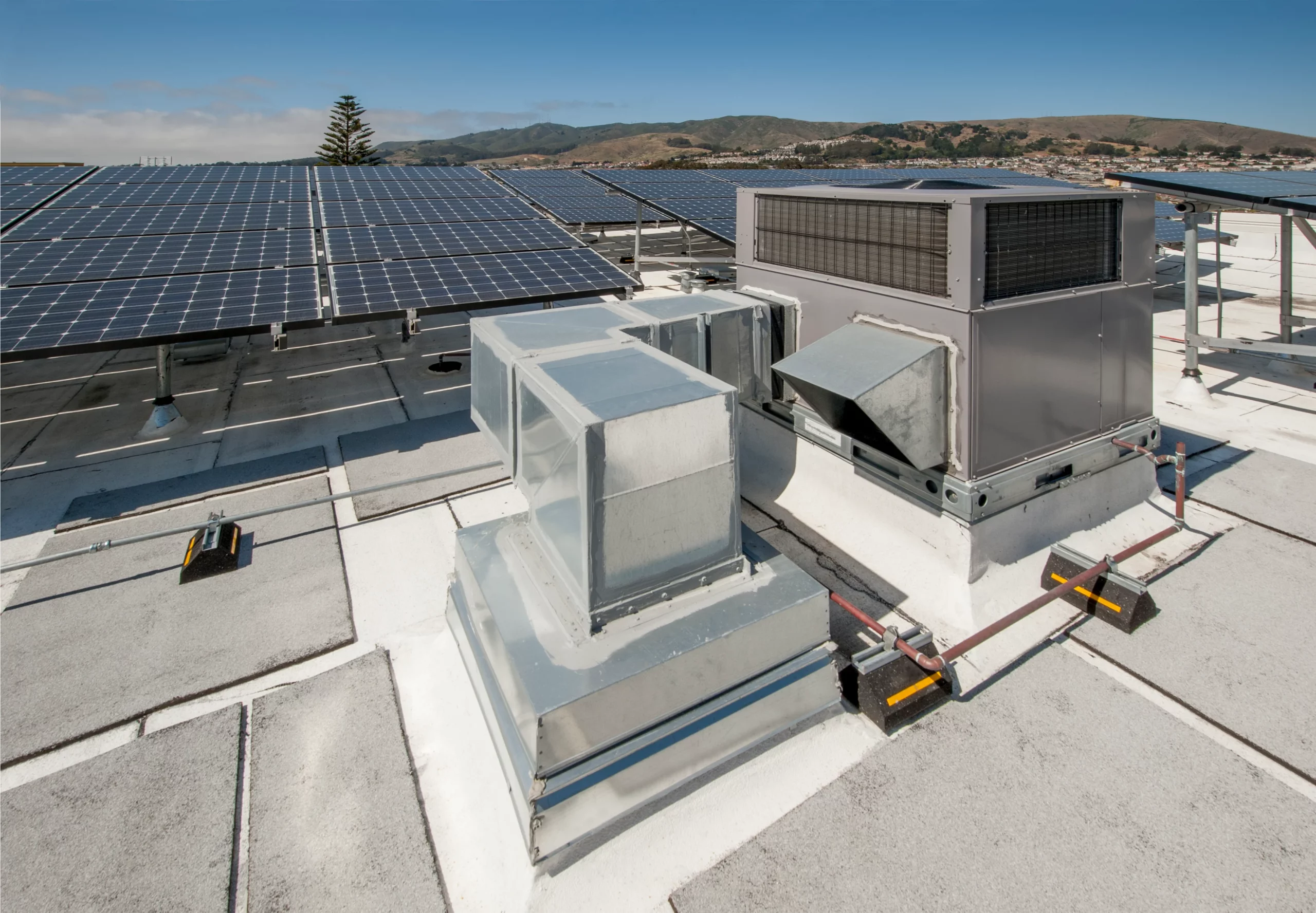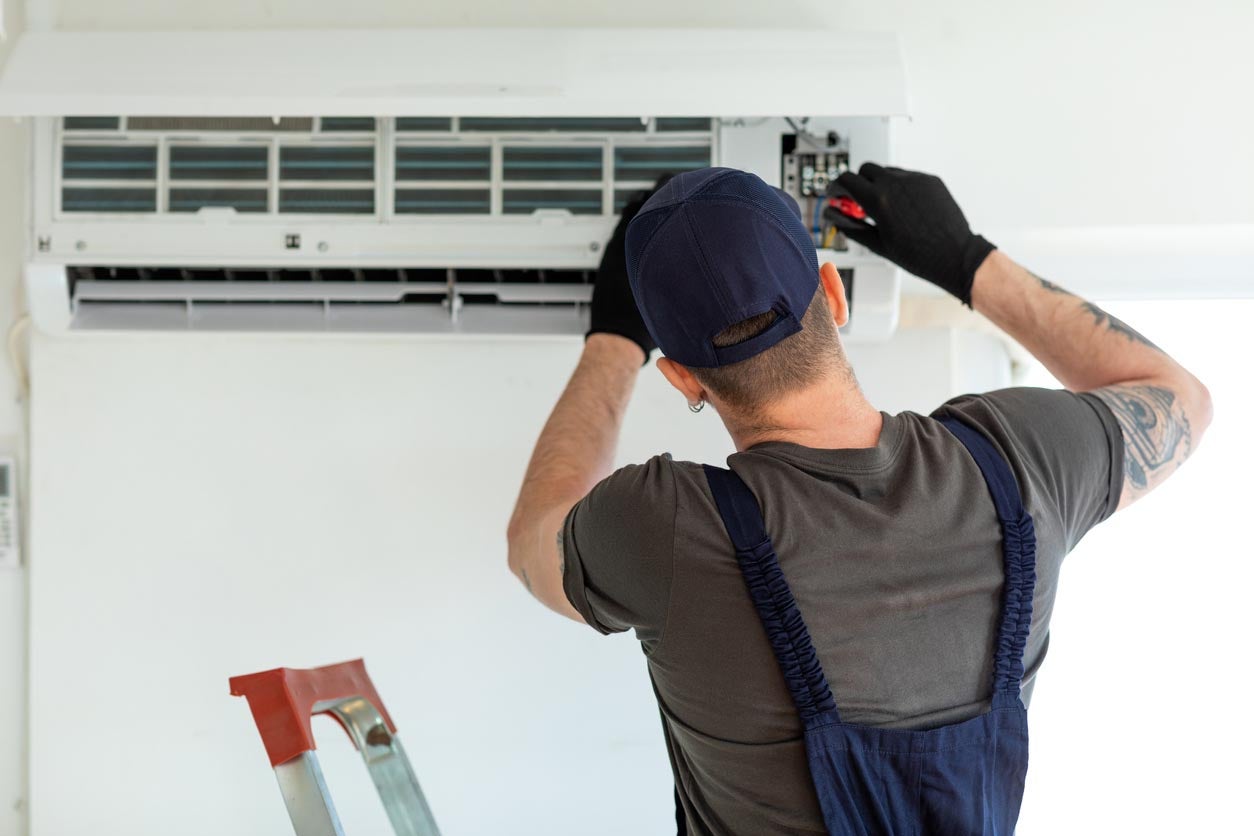Air conditionersAir conditioners work by removing heat from the air inside a building and transferring it to the outside. They use a refrigerant, which is a substance that changes from a liquid to a gas and back again, to absorb heat from the indoor air and transfer it outside. The refrigerant is through a system of coils and a compressor, which control the transfer of heat. The cooled air is then back into the building, reducing the temperature and increasing the comfort of the occupants. Air conditioners also typically include a filter to remove dust and other particles from the air.
Types of Air Conditioners

There are several types of air conditioners, including:
- Split-system AC, which consist of an outdoor unit and an indoor unit.
- Window AC, which are self-contained units that are in a window or a hole in a wall.
- Portable AC, which can be moved from room to room and do not require permanent installation.
- Central AC, which cool the entire house through a system of ducts and vents.
- Ductless mini-split AC, which also consist of an outdoor unit and an indoor unit, but do not require ducts to connect them.
- Hybrid AC which use heat pump technology to cool the air and also provide heating.
ACs provide a convenient way to cool down a room or building during hot weather. However, like any technology, they come with their own set of pros and cons.
How Air Conditioning was invented
ACs were invented in the late 19th century by a man named Willis Haviland Carrier. Carrier was an engineer working for the Buffalo Forge Company, a manufacturer of heating and ventilation equipment. In 1902, he was tasked with solving a problem at the Sackett-Wilhelms Lithographing and Publishing Company in Brooklyn, New York. The company’s printing process produced too much humidity, which caused the paper to expand and contract, resulting in misaligned ink.
Carrier set out to find a solution to this problem and, after several months of experimentation, he developed a system that could control both temperature and humidity. This system used a compressor to circulate a cooled and dehumidified air through the building. Carrier’s invention was the first true air conditioning system, and it allowed the Sackett-Wilhelms Lithographing and Publishing Company to produce high-quality printed materials year-round.

The first air conditioning systems were large, expensive, and not very efficient. They were primarily in commercial buildings such as factories, cinemas, and department stores. However, as technology improved and costs decreased, air conditioners began to be used in homes as well.
During the 1920s and 1930s, several companies began to manufacture and sell air conditioners for residential use. These early units were window-mounted and often noisy, but they were still a significant improvement over the hot, humid conditions that existed before.
In the 1940s and 1950s, the development of the central air conditioning system made air conditioning even more widely available. These systems use a single unit to cool an entire house, rather than just one room. Central air conditioning systems are more efficient and quieter than window units, and they are also more expensive.
Today, air conditioners are an essential part of modern life. They are in homes, offices, cars, and many other places to provide a comfortable environment in hot weather. Air conditioners have also been credited with improving public health by reducing the spread of disease-carrying insects and mold spores. The invention of air conditioners by Willis Haviland Carrier in 1902 was a major step forward in human comfort and progress.
How Air conditioners makes sense

Pros:
- Temperature control: Air conditioners allow you to control the temperature in a room or building, making it more comfortable during hot weather.
- Improved air quality: Air conditioners can filter out pollutants and allergens from the air, making it cleaner and healthier to breathe.
- Increased productivity: A comfortable environment can help to increase productivity and concentration, especially in the workplace.
- Reduced humidity: Air conditioners can remove excess moisture from the air, which can help to prevent mold and mildew growth.
- Increased lifespan of electronics: Air conditioning can help to prolong the lifespan of electronic devices by preventing overheating.
Cons:
- High energy consumption: Air conditioners consume a significant amount of energy, which can lead to higher electricity bills.
- Environmental impact: Air conditioners can contribute to greenhouse gas emissions, and the refrigerants used in them can have a negative impact on the environment.
- Noise pollution: Some air conditioners can be loud, which can be disruptive to those in close proximity.
- Maintenance costs: Air conditioners require regular maintenance to keep them running efficiently, which can be costly over time.
- Health risks: In some cases, air conditioners can cause respiratory problems, such as dry throat and nasal congestion. Especially if the air filter is not cleaned regularly.
Overall, air conditioners can be a convenient and effective way to cool down a room or building during hot weather. However, it is important to consider the potential downsides, such as high energy consumption, environmental impact, noise pollution, maintenance costs and health risks. To minimize these cons, it is important to use energy-efficient models, properly maintain the unit, and use it only when necessary.
More environment friendly replacement of ACs

Some alternatives to traditional air conditioners that are more environmentally friendly include:
- Evaporative coolers: These use water to cool the air and can be more energy-efficient than traditional ACs.
- Ceiling fans: These can help circulate cool air and reduce the need for air conditioning.
- Portable air conditioners: These are movable from room to room, making them more energy-efficient than central air conditioning.
- Natural ventilation: This is the use of windows, doors, vents, and other openings to help circulate cool, fresh air into a building.
- Geothermal cooling: This utilizes the constant temperature of the earth to cool and heat buildings.
- Green roofs and walls : this can help to reduce the heat island effect and keep building cool.
It is important to note that the most appropriate solution will depend on the specific circumstances such as the climate, the size of the building, and the needs of the occupants.


